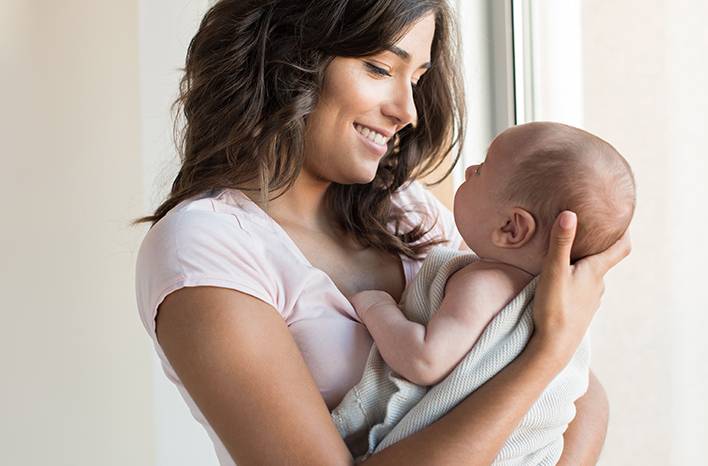
If you’re pursuing a semi-open or fully open adoption, you will be communicating with your baby’s birthmother to some extent before, during, and after the baby is born. Some relationships between an adoptive family and a birthmother feel awkward at first, but after some time and effort, the relationships grow to become strong and meaningful for all involved.
A Note about Expectant Mothers
Carrying a baby for nine months and then giving him or her to another family to be raised is a painful and difficult action. We have found that in order for a woman to carry through with a commitment like this, she must have some very motivating factors. She may have a strong conviction that this child must have a traditional two-parent family. Perhaps she is still in school and doesn’t want to interrupt her education. Maybe she does not wish to sacrifice her career to raise a child. Or maybe she already has children and does not have the financial or emotional resources to raise another. In general, the expectant mothers who come to us find it impossible to raise a child due to financial or emotional reasons. Whatever factors lead an expectant mother to choose adoption for her baby, you'll likely find she will not be as together or stable as you, your family, or your friends. Keep all of this in mind when communicating with an expectant mother — it is very important!
Communication
If you’ve already talked or met with an expectant mother, it’s a good idea to continue communicating with her throughout her pregnancy. That way you’ll all get to know each other better and form a solid, healthy relationship you can continue to build on after the adoption.
We encourage you to be as open with the expectant mother as you are comfortable with while still respecting her wishes. A good starting point is to talk with her to determine what level of openness you are all comfortable with before, during, and after the adoption. Consider the following questions during your discussion. Your answers will guide your communication throughout the adoption process.
During Pregnancy
- What forms of communication work best for all involved? Would you like to talk in person, on the phone, via text, via email, or via social media?
- Is the expectant mother comfortable with any of your family members joining her when she goes to her doctor’s appointments?
- Would you like her to send you updates about the growth and progress of the baby? How about ultrasound pictures?
During and After Delivery
- How will the expectant mother notify you when she goes into labor or when the baby is scheduled to be delivered? She may wish to tell you directly, or she might want us to tell you on her behalf.
- Is she comfortable with any members of your family being in the room with her when she delivers the baby?
- How much time would she like to spend with the baby in the hospital after he or she is born?
After the Adoption
- How often would the expectant mother like to receive updates from you? What does she expect these updates to include?
- Would she like to have in-person visits? If so, how often?
- Would she like to give you a picture of herself and/or the baby's father, a letter, a video recording, or something else to share with the baby in the future?
- To help with your baby’s future medical appointments, would she consider providing you with her family’s medical history and the biological father’s medical history if possible?
It may be beneficial for you all to consider creating a post-adoption agreement. This could be a formal written agreement or an informal verbal agreement where you outline everything about the adoption you have agreed on. (Note that depending on the laws in your state, these agreements are not always legally enforceable.)
If you iron out these details early on, you’ll all be on the same page throughout the adoption process and avoid any misunderstandings or hard feelings along the way.
While making these decisions, it’s important to set clear boundaries, be specific, show respect, and be guided by what is best for the baby. Also try to be flexible in order to accommodate changes that may happen over time.







